
The latest APEC Regional Trends Analysis (ARTA) reveals that growth is expected to remain strong through 2025, buoyed by frontloaded trade and high-tech goods demand. However, momentum is set to moderate in 2026 as fiscal conditions tighten and policy uncertainty lingers.
Resilient Growth, New Trade Realities
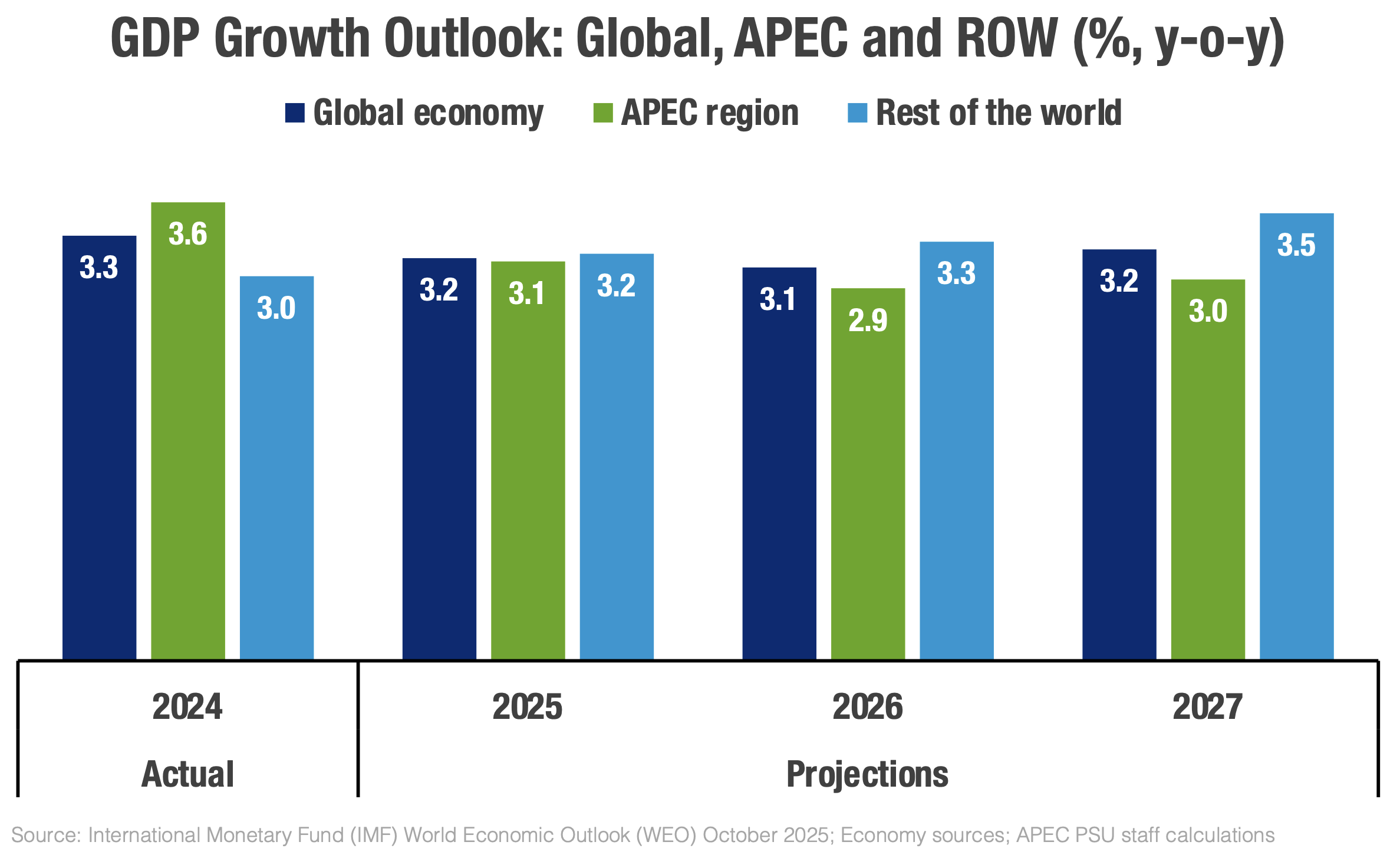
APEC's economy has shown continued resilience in 2025. Growth forecasts have been revised upward, with GDP now expected to expand by 3.1 percent in 2025, slightly higher than the 3.0 percent projection in the August's edition of ARTA. However, this momentum may be short-lived. The latest analysis points to a softer 2.9 percent growth in 2026, as temporary drivers such as frontloaded trade and inventory buildup subside.
Robust demand for metals and high-tech components has helped sustain APEC's growth through the year, offsetting the drag from policy frictions and external headwinds. Supply chains are still in flux, with economies racing to diversify production and reduce exposure to geopolitical risk. But these shifts come at a cost of slower productivity growth, elevated debt levels and weaker external demand - all of which threaten to slow the region's medium-term momentum.
Easing Inflation, Room for Policy Support
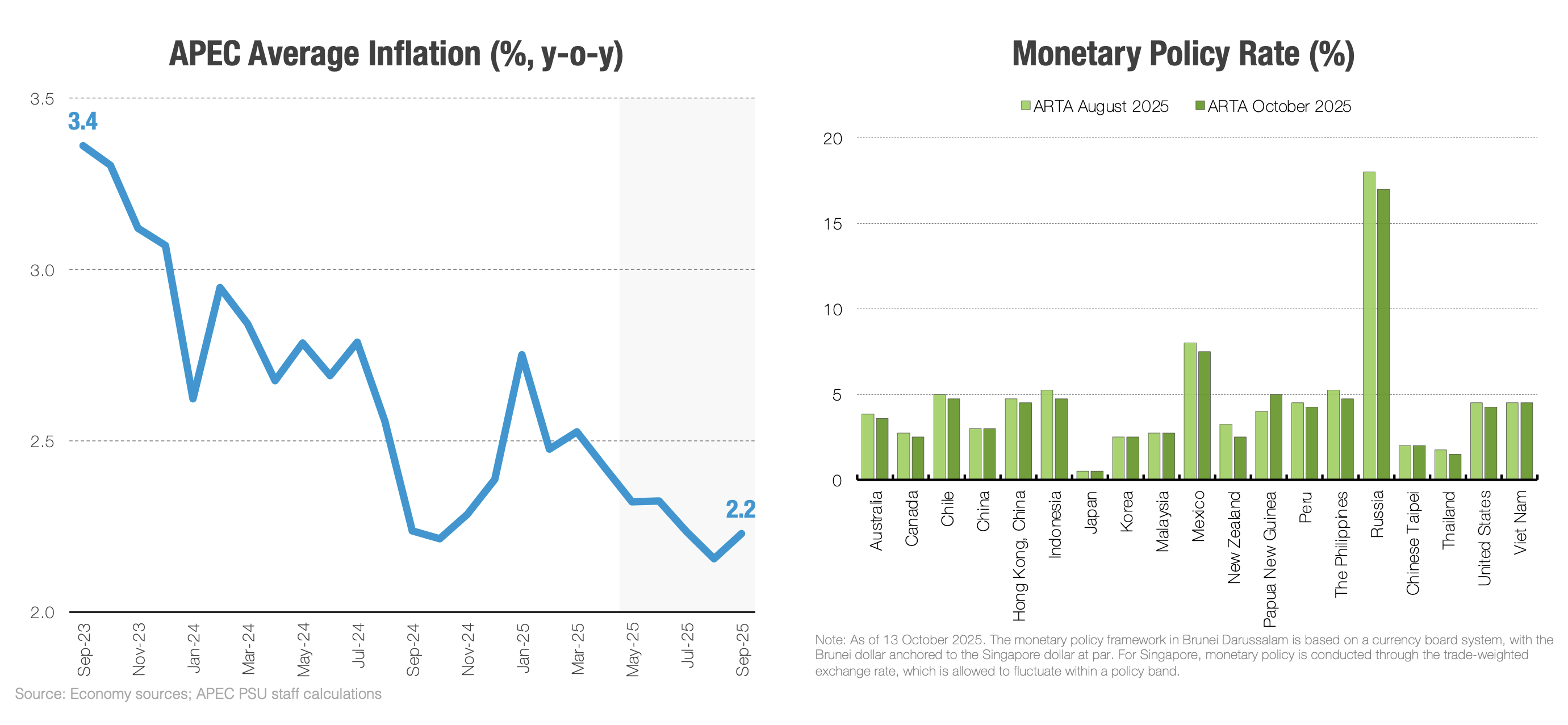
Inflation across APEC has eased to 2.2 percent in the third quarter of 2025, settling comfortably within target for most economies. Energy prices have cooled as supply conditions improved following earlier geopolitical tensions, while food prices have broadly stabilized across key commodities.
With price pressures subsiding, many central banks have opted to maintain a cautiously accommodative monetary stance, keeping rates low enough to support growth while preserving enough room to maneuver should inflationary risks resurface. The slower pace of disinflation underscores a delicate balancing act in which policymakers help sustain demand without reigniting price pressures in a still-fragile recovery.
Trade Gains Continue, but Drivers Are Temporary
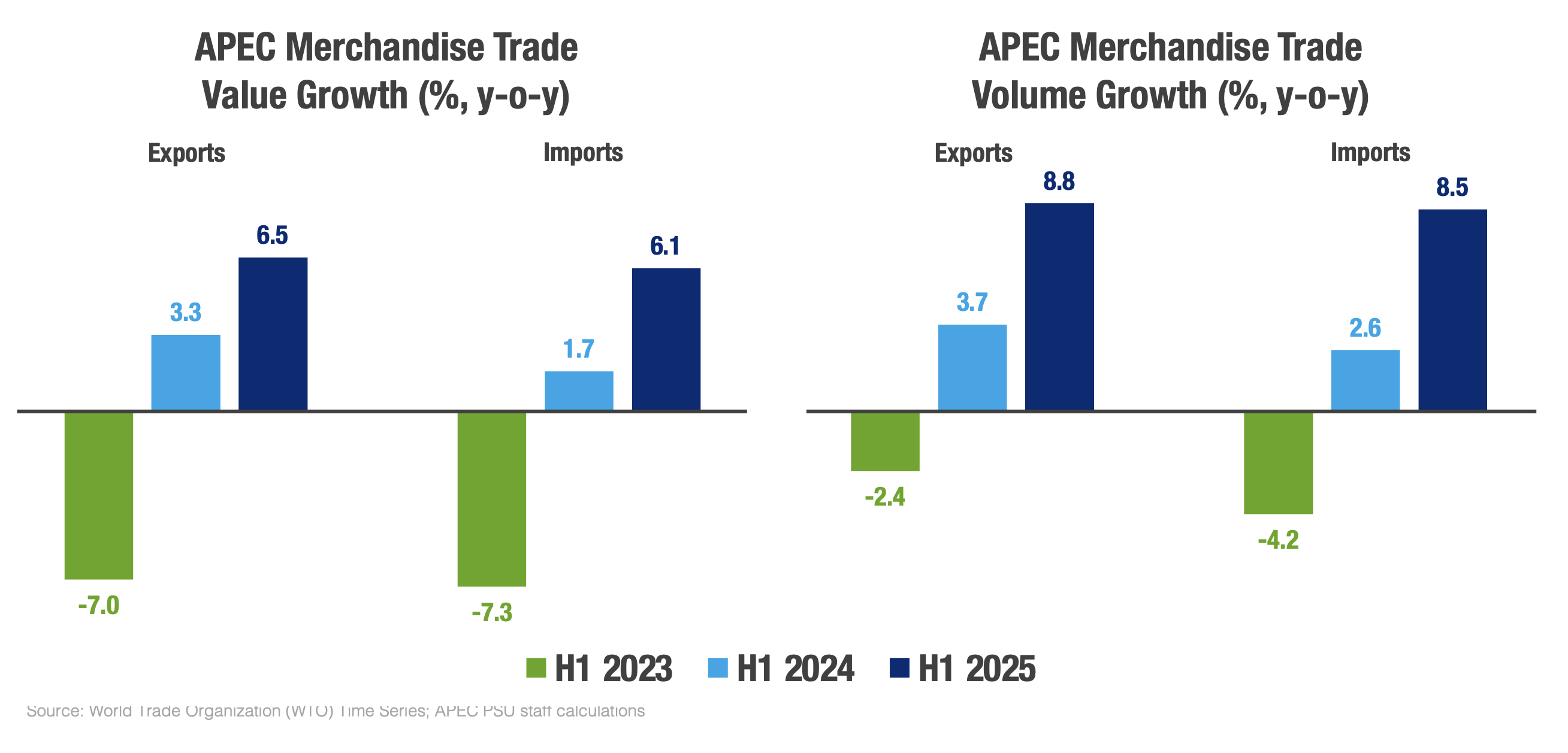
Trade has remained a bright spot in APEC's 2025 performance. Merchandise exports and imports rose by 6.5 percent and 6.1 percent in value, respectively, and 8.8 percent and 8.5 percent in volume during the first half of the year. The expansion was driven by frontloaded shipments, robust high-tech demand and agile adjustment by businesses, particularly seeking new markets and diversifying supply sources.
However, much of this expansion in trade stems from precautionary activity as firms accelerated shipment and built up inventories in anticipation of possible new trade restrictions. As these temporary drivers fade, trade growth in APEC is expected to moderate significantly in 2026, with the volume of goods exports projected to slow to around 1.1 percent.
While economies continue to promote trade facilitation and deepen regional economic integration, rising trade-restrictive measures and trade remedies point to a more sensitive, cautious and fragmented global trade environment.
Metal and Semiconductor Markets Reflect Structural Shifts
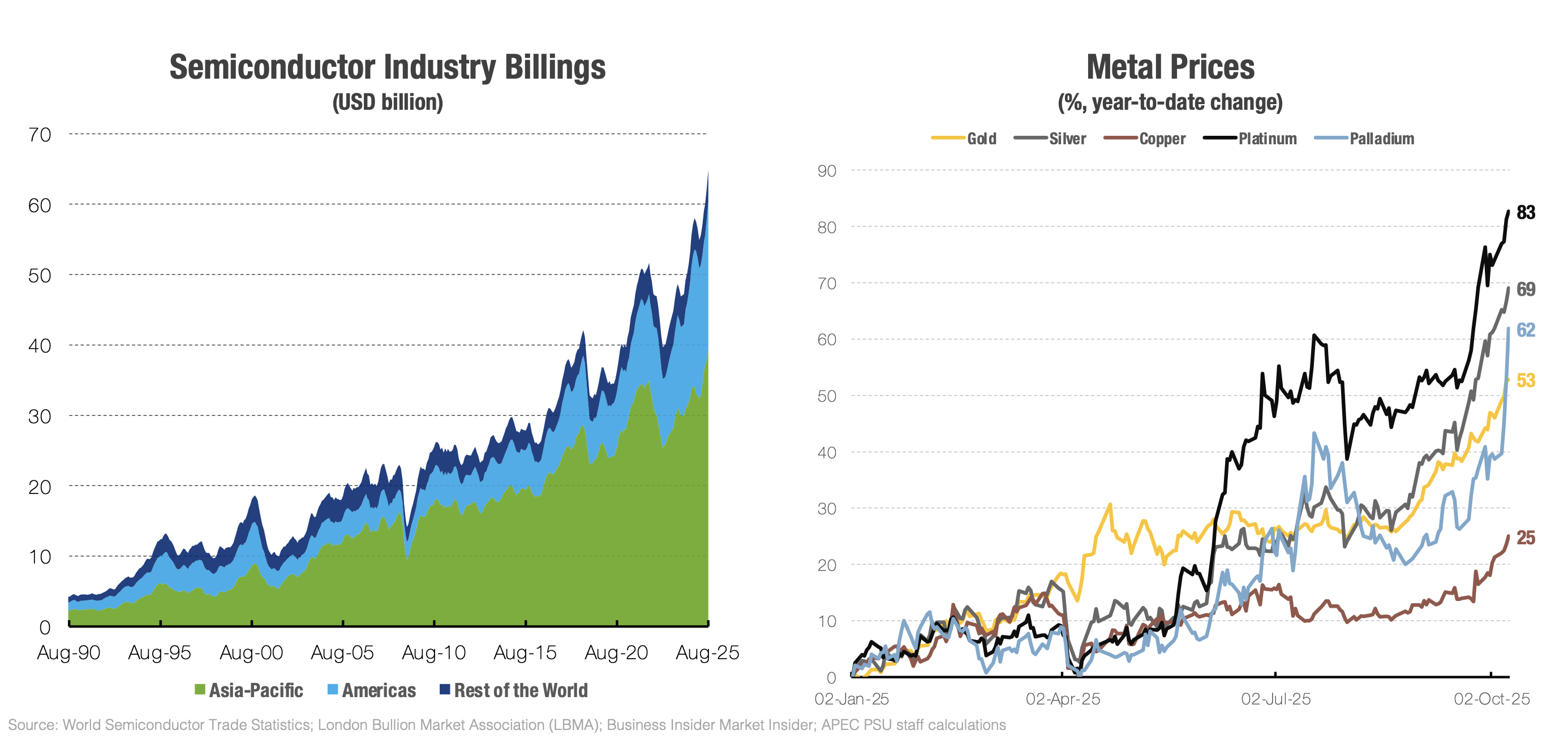
The surge in demand for metals and semiconductors underscores APEC's central role in global industrial and technology supply chains. Strong safe-haven buying and rising demand from AI-related production, renewable energy sectors and electric vehicles lifted metal prices. At the same time, semiconductor billings across the Asia-Pacific have reached record highs on advances in logic and memory chip manufacturing.
These developments present both opportunity and exposure. Strong demand from high-tech industries is supporting near-term growth, but the region remains vulnerable to supply bottlenecks, trade policy uncertainty, price swings and intensifying global competition. The challenge for policymakers lies in turning this cyclical momentum into sustainable, innovation-driven growth amid evolving global dynamics.
Debt Pressures Tighten Fiscal Space
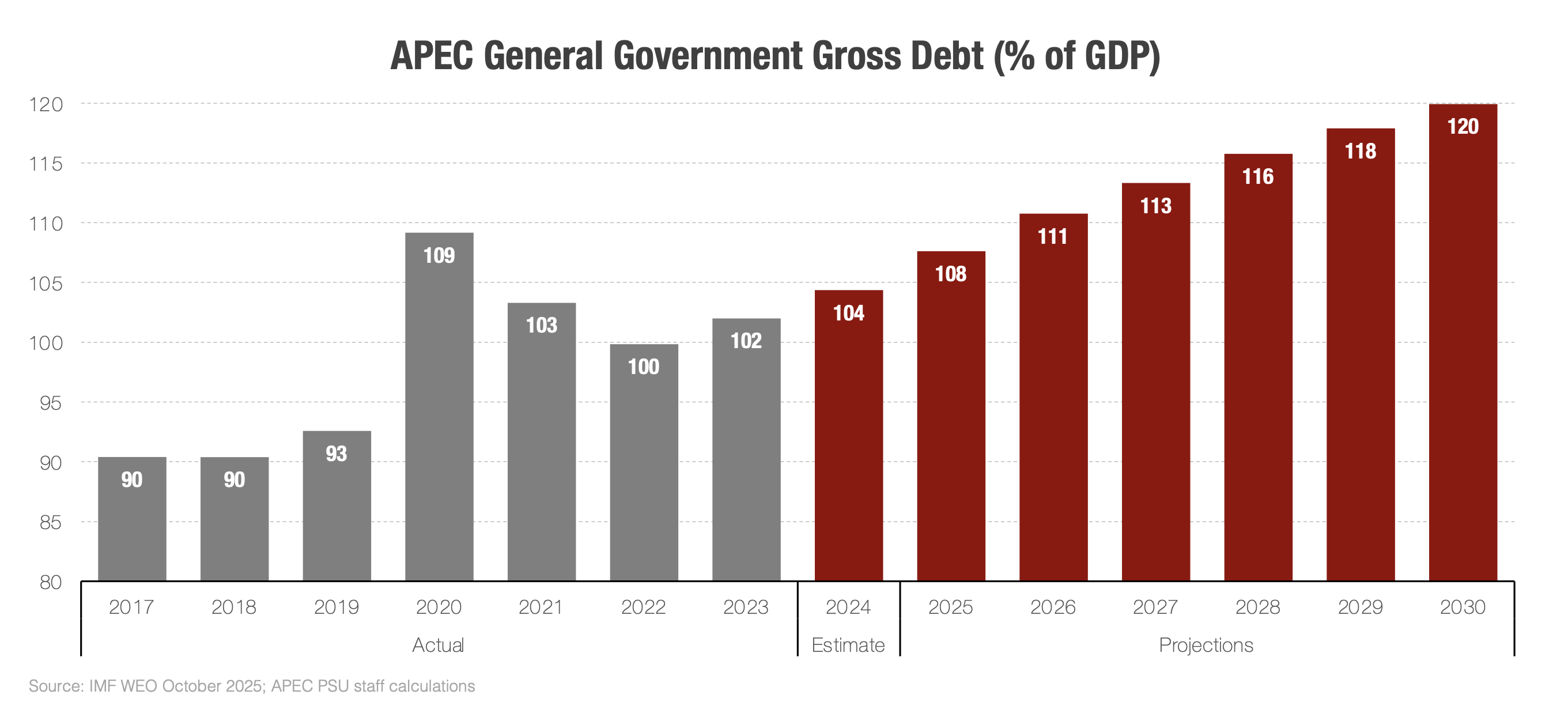
Rising public debt remains a pressing concern across the APEC region. General government gross debt is projected to exceed 110 percent of GDP by 2026, reflecting lingering fiscal costs from pandemic-era support measures and slower revenue recovery. These debt projections mark an upward revision from the previous ARTA estimates.
Governments now face the difficult task of sustaining growth and prioritizing social initiatives while rebuilding fiscal buffers to respond to future shocks. Elevated debt burdens are limiting resources for long-term investments in infrastructure, human capital and climate adaptation.
At the same time, aging population and a shrinking labor force are squeezing revenues while driving up spending in health, pensions and social services. These compounding pressures highlight the need for fiscal reforms, particularly credible fiscal frameworks, and more efficient spending that could adequately support growth and counter shocks.
Restoring Confidence, Revitalizing Growth
With uncertainty still high, APEC economies must navigate a delicate path toward preserving near-term stability and advancing long-term reforms that rebuild confidence and strengthen resilience. Three key policy priorities can steer this process forward:
Sound Economic Policies: Strengthen macroeconomic fundamentals and policy credibility through transparent, well-communicated monetary frameworks. Improving public spending efficiency, adopting smarter budgeting and gradually rebuilding fiscal buffers will help restore confidence and policy space.
Transformative Structural Reforms: Enhance productivity through innovation, labor and digital reforms that harness artificial intelligence and accelerate technology adoption. Strengthening human capital, promoting business innovation and closing digital divides will ensure technological progress translates into sustainable growth that benefits all.
Adaptive Regional Cooperation: Leverage APEC's platform to deepen policy coordination, promote predictable trade and investment frameworks, and solidify multilateral cooperation. Consistent dialogue and shared goals can help mitigate trade policy uncertainty and reinforce long-term stability.
In a world of shifting trade dynamics and evolving technologies, cooperation and predictability are vital anchors. This is where APEC proves its value as an important platform that fosters trust through transparency, evidence-based policymaking and collective action, transforming dialogue into concrete outcomes that enhance resilience and sustain growth across the region.
Looking ahead to 2026, implementing smart fiscal policy, harnessing technologies and bolstering cooperation will be critical to restoring confidence and revitalizing growth in an increasingly complex global environment. Through continuous engagement and shared commitment, policy dialogues that rebuild trust can help shape a more predictable future for the region.
Rhea Crisologo Hernando is analyst, Glacer Niño A. Vasquez is researcher, and Carlos Kuriyama is director at the APEC Policy Support Unit.
For more on this topic, download the latest APEC Regional Trends Analysis report.






